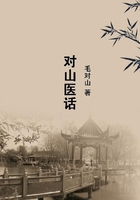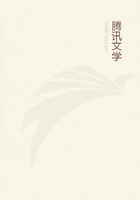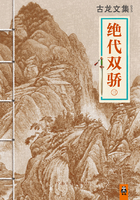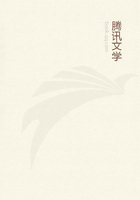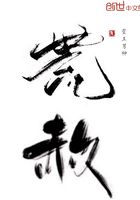At the present time in this country the Indians furnish examples of marvelous feats of running. The Tauri-Mauri Indians, who live in the heart of the Sierra Madre Mountains, are probably the most wonderful long-distance runners in the world. Their name in the language of the mountain Mexicans means foot-runners; and there is little doubt that they perform athletic feats which equal the best in the days of the Olympian games. They are possibly the remnants of the wonderful runners among the Indian tribes in the beginning of this century. There is an account of one of the Tauri-Mauri who was mail carrier between Guarichic and San Jose de los Cruces, a distance of 50 miles of as rough, mountainous road as ever tried a mountaineer's lungs and limbs. Bareheaded and barelegged, with almost no clothing, this man made this trip each day, and, carrying on his back a mail-pouch weighing 40pounds, moved gracefully and easily over his path, from time to time increasing his speed as though practicing, and then again more slowly to smoke a cigarette. The Tauri-Mauri are long-limbed and slender, giving the impression of being above the average height. There is scarcely any flesh on their puny arms, but their legs are as muscular as those of a greyhound. In short running they have the genuine professional stride, something rarely seen in other Indian racers. In traversing long distances they leap and bound like deer.
"Deerfoot," the famous Indian long-distance runner, died on the Cattaraugus Reservation in January, 1896. His proper name was Louis Bennett, the name "Deerfoot" having been given to him for his prowess in running. He was born on the reservation in 1828.
In 1861 he went to England, where he defeated the English champion runners. In April, 1863, he ran 11 miles in London in fifty-six minutes fifty-two seconds, and 12 miles in one hour two minutes and two and one-half seconds, both of which have stood as world's records ever since.
In Japan, at the present day, the popular method of conveyance, both in cities and in rural districts, is the two-wheeled vehicle, looking like a baby- carriage, known to foreigners as the jinrickisha, and to the natives as the kuruma. In the city of Tokio there is estimated to be 38,000 of these little carriages in use. They are drawn by coolies, of whose endurance remarkable stories are told. These men wear light cotton breeches and a blue cotton jacket bearing the license number, and the indispensable umbrella hat. In the course of a journey in hot weather the jinrickisha man will gradually remove most of his raiment and stuff it into the carriage. In the rural sections he is covered with only two strips of cloth, one wrapped about his head and the other about his loins. It is said that when the roadway is good, these "human horses" prefer to travel bare-footed; when working in the mud they wrap a piece of straw about each big toe, to prevent slipping and to give them a firmer grip. For any of these men a five-mile spurt on a good road without a breathing spell is a small affair. A pair of them will roll a jinrickisha along a country road at the rate of four miles an hour, and they will do this eight hours a day. The general average of the distance traversed in a day is 25 miles. Cockerill, who has recently described these men, says that the majority of them die early.
The terrible physical strain brings on hypertrophy and valvular diseases of the heart, and many of them suffer from hernia.
Occasionally one sees a veteran jinrickisha man, and it is interesting to note how tenderly he is helped by his confreres.
They give him preference as regards wages, help push his vehicle up heavy grades, and show him all manner of consideration.
Figure 180 represents two Japanese porters and their usual load, which is much more difficult to transport than a jinrickisha carriage. In other Eastern countries, palanquins and other means of conveyance are still borne on the shoulders of couriers, and it is not so long since our ancestors made their calls in Sedan-chairs borne by sturdy porters.
Some of the letter-carriers of India make a daily journey of 30miles. They carry in one hand a stick, at the extremity of which is a ring containing several little plates of iron, which, agitated during the course, produce a loud noise designed to keep off ferocious beasts and serpents. In the other hand they carry a wet cloth, with which they frequently refresh themselves by wiping the countenance. It is said that a regular Hindustanee carrier, with a weight of 80 pounds on his shoulder,--carried, of course, in two divisions, hung on his neck by a yoke,--will, if properly paid, lope along over 100 miles in twenty-four hours--a feat which would exhaust any but the best trained runners.
The "go-as-you-please" pedestrians, whose powers during the past years have been exhibited in this country and in England, have given us marvelous examples of endurance, over 600 miles having been accomplished in a six-days' contest. Hazael, the professional pedestrian, has run over 450 miles in ninety-nine hours, and Albert has traveled over 500 miles in one hundred and ten hours. Rowell, Hughes, and Fitzgerald have astonishingly high records for long-distance running, comparing favorably with the older, and presumably mythical, feats of this nature. In California, C. A. Harriman of Truckee in April, 1883, walked twenty-six hours without once resting, traversing 122 miles.
For the purpose of comparison we give the best modern records for running:--100 Yards.--9 3/5 seconds, made by Edward Donavan, at Natick, Mass., September 2, 1895.
220 Yards.--21 3/5 seconds, made by Harry Jewett, at Montreal, September 24, 1892.
Quarter-Mile.--47 3/4 seconds, made by W. Baker, at Boston, Mass., July 1, 1886.
Half-Mile.--1 minute 53 2/3 seconds, made by C. J. Kirkpatrick, at Manhattan Field, New York, September 21, 1895.
1 Mile.--4 minutes 12 3/4 seconds, made by W. G. George, at London, England, August 23, 1886.




